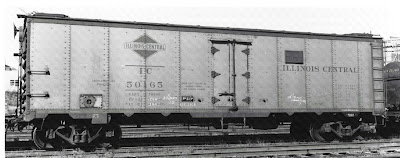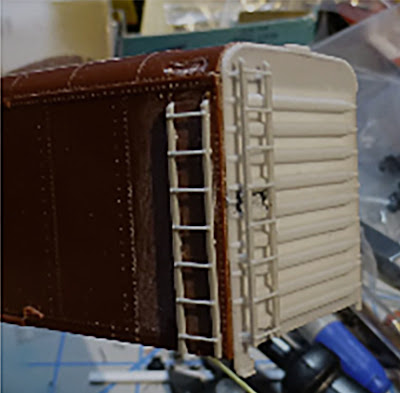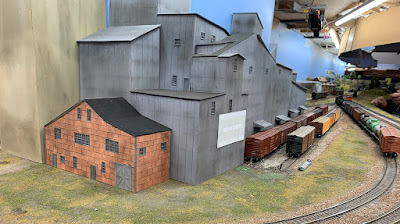The Seaboard box car which was the 2020 “Shake ’n’ Take” project at the Cocoa Beach Prototype Rails meeting that year, a model project designed and presented by Steve Hile, is being built in this series of posts. For prototype photos of the car class being modeled, see the first post in the series (it can be found at: https://modelingthesp.blogspot.com/2024/02/the-2022-shake-n-take-seaboard-box-car.html ).
The only major deviation from the project instructions was that I did not correct the side panel spacing to the right of the doors, using the Archer rivets provided with the project. I have done this on other models and will have to confess it is pretty hard to see on a completed model. I did remove the second rivet row at each panel seam, as mentioned before.
At the end of the previous post, describing construction (at least the steps where I differed from the very clear Steve Hile written directions), I was ready to paint the model and the yet-to-be installed running board (that post can be viewed at: https://modelingthesp.blogspot.com/2024/02/shake-n-take-seaboard-box-car-part-2.html ). As mentioned there, I chose Tamiya “Red Brown,” color #TS-1, for this model. This fits Steve’s comment that the Seaboard cars were a color “on the brown side of boxcar red.”
I should mention that there are two things not yet installed on the body as you see it, Both were held back so that paint would cover areas underneath where these parts would go. One is, of course, the running board, very evidently absent in the photo above.
The other thing missing is the replacement levers for the Camel roller-lift mechanisms on the car doors. These were made from short lengths of scale 1 x 2-inch styrene strip, pre-painted, and installed with canopy glue, as shown below at right. The original Bowser door is at left. You can compare the model, below, with the prototype photos (see link in first paragraph, above).
The running board was cut apart, as mentioned above, and the center part installed first. The photo below shows the roof “indent,” nearest the camera, which accepts the lateral running board. (You can click on the image to enlarge it if you wish.)
I then installed the lateral boards to fit, using canopy glue again. With all modeling and paint completed, I could turn to lettering, using the very nice decals provided for the project by National Scale Car. I chose to use the original all-white Seaboard emblem, since I have a bunch of Seaboard cars with the red “Heart of the South” emblems.
Here is the model, fully lettered and awaiting weathering. You may note that I added a route card from the very nice decal set of such cards from Owl Mountain Models, their set 1220 (see: https://modelingthesp.blogspot.com/2023/12/route-cards-part-30-modeling.html ).
My usual weathering method, with acrylic washes, was applied to this model (for full description and examples, see the “Reference pages” link at the upper right of this post). I attempted to make the roof dirtier than the sides, as is often observed in the prototype, and then added a protective coat of clear flat (I prefer Tamiya’s flat, TS-80, nowadays). Then of course I added some chalk marks with Prismacolor pencils to complete the project.
This was an interesting Shake ’n’ Take project and I enjoyed doing it. I am also pleased to have one of these distinctive Seaboard cars in my fleet. Thanks to Steve Hile for his work on getting this together. Greg Martin would have been pleased.
Tony Thompson






























 ,
, 




















